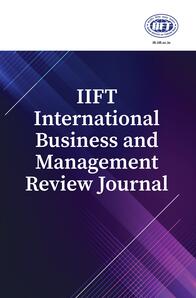
1 Department of Fashion Design, Footwear Design and Development Institute, Noida/Rae Bareli (Fusartganj Campus), Noida, Uttar Pradesh, India
Creative Commons Non Commercial CC BY-NC: This article is distributed under the terms of the Creative Commons Attribution-NonCommercial 4.0 License (http://www.creativecommons.org/licenses/by-nc/4.0/) which permits non-Commercial use, reproduction and distribution of the work without further permission provided the original work is attributed.
Every year, the fashion industry churns out millions of clothing items with fresh styles, resulting in significant fabric waste during production. This fabric waste contributes to environmental pollution. Embracing zero-waste pattern-making techniques for clothing production offers a viable solution to curbing this issue. By utilising the entire fabric yardage, these techniques aim to minimise or eliminate fabric waste after garment production. Zero-waste design is a holistic approach that integrates designing, production and sourcing processes. This article aims to propose solutions for controlling fabric waste through innovative zero-waste pattern-design techniques, thereby fostering a sustainable future. Traditionally, the apparel production process utilises 85% of fabrics, leaving behind 15% as wastage. The challenge lies in reducing this 15% wastage to zero (Abernathy et al., 1999). However, it is acknowledged that not everyone can readily adopt zero-waste pattern techniques. It requires creativity to develop optimal design solutions for apparel production. Collaboration among designers, pattern makers, academics and production professionals is essential for researching and identifying the best creative practices and solutions for integrating zero-waste pattern-making techniques into the apparel production process. Developing approaches for zero-waste pattern-making involves researching basic pattern design principles, understanding associated challenges and analysing outcomes. This research and development process in zero-waste pattern-making can pave the way for better sustainable practices, ultimately contributing to the reduction of fabric waste pollution and fostering a more sustainable future.
Zero waste, sustainable fashion, pattern cutting, design, techniques
Abernathy, F. H., Dunlop, J. T., Hammon, J. H., & Weil, D. (1999). A stitch in time: Lean retailing and the transformation of manufacturing—Lessons from the apparel and textile industries. Oxford University Press.
Carrico, M., & Kim, V. (2014). Expanding zero-waste design practices: A discussion paper. International Journal of Fashion Design, Technology and Education, 7(1), 58–64. https://doi.org/10.1080/17543266.2013.837967
El Shishtawy, N., Sinha, P., & Bennell, J. A. (2021). A comparative review of zero-waste fashion design thinking and operational research on cutting and packing optimisation. International Journal of Fashion Design, Technology and Education, 15(2), 187–199. https://doi.org/10.1080/17543266.2021.1990416
Ellen MacArthur Foundation. (2017). A new textiles economy: Redesigning fashion’s future. Retrieved, 20 March 2020, from https://www.ellenmacarthurfoundation.org/publications
McQuillan, H. (2011). Zero-waste design practice: Strategies and risk taking for garment design. In A. Gwilt & T. Rissanen (Eds.), Shaping sustainable fashion: Changing the way we make and use clothes (pp. 83–97). Earthscan.
Niinimäki, K. (2011). From disposable to sustainable: The complex interplay between design and consumption of textiles and clothing [PhD dissertation, Aalto University].
Roberts, J. (2008). Subtraction cutting school. Center for Pattern Design.
Saeidi, E., & Wimberley, V. S. (2018). Precious cut: Exploring creative pattern cutting and draping for zero-waste design. International Journal of Fashion Design, Technology and Education, 11(2), 243–253. https://doi.org/10.1080/17543266.2017.1389997
Townsend, K., & Mills, F. (2013). Mastering zero: How the pursuit of less waste leads to more creative pattern cutting. International Journal of Fashion Design, Technology and Education, 6(2), 104–111. https://doi.org/10.1080/17543266.2013.793746
Web References
https://fairtradefinder.com/blog/clothes-made-from-recycled-materials/
https://www.cooperhewitt.org(/2016/10/25)boro-and-other-japanese-recycled-wonders.
https://dr.lib.iastate.edu/server/api/core/bitstreams/6c9cec2e-af45-4458-ab94-315bc5c7aafe/content
https://eprints.whiterose.ac.uk/179239/13/A%20comparative
https://www.scribd.com/document/561514410/Fashion-Creativity-in-Zero-Waste-
Pattern-Making
https://fairtradefinder.com/blog/clothes-made-from-recycled-materials/
https://www.genevaenvironmentnetwork.org/resources/updates/sustainable-fashion/
https://isitleather.com/blog/the-sustainability-of-leather-fashion-over-fast-fashion-trends/